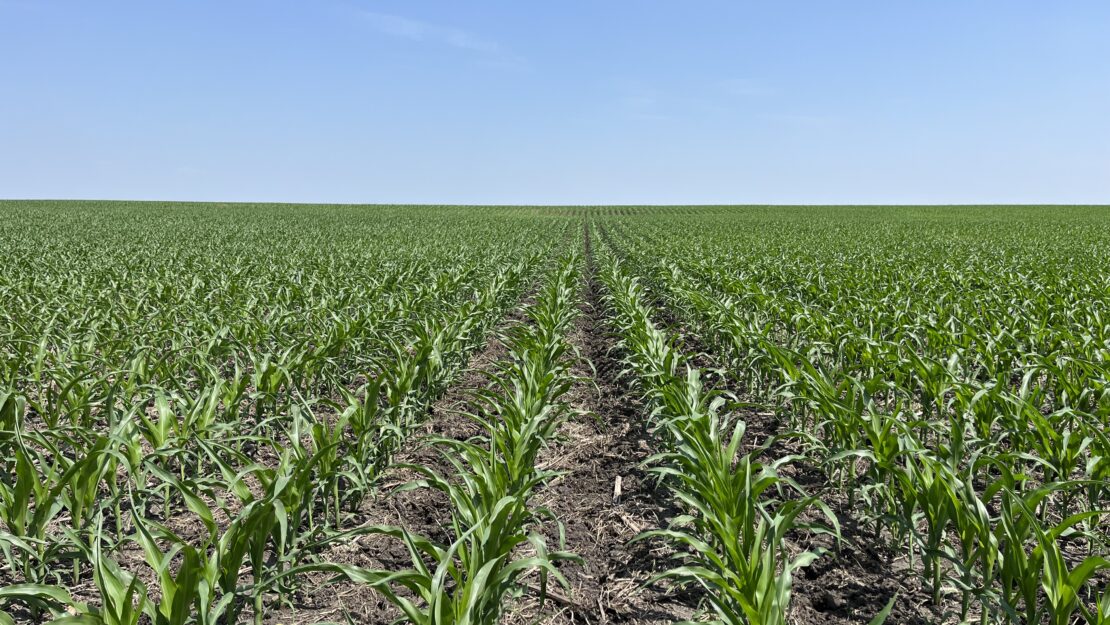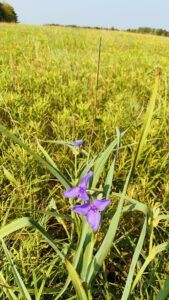Staying Grounded in Soil Conservation

By Mia Makovsky, Clean Water Corpsmember / AmeriCorps Member placed with Dodge Soil Water and Conservation District

At the Dodge Soil and Water Conservation District (SWCD) we work side by side with landowners of Dodge County, MN to improve soil and water quality while promoting native biodiversity.
I have the privilege of working in a field office with many different local and federal agencies. Pheasants Forever, the Natural Resources Conservation Service (NRCS), and team members of the Dodge SWCD all call the same building home. The various entities that occupy my office work to build relationships with landowners and are united by one cause: conservation.
Although nearly 38% of land on Earth is classified as agricultural area, agriculture isn’t always at the front of everyone’s mind when considering what communities need more conservation resources. It can be an intimidating industry to work with due to the high stakes of agriculture. Not only is the land we work with the economic livelihood of farmers and landowners, but it also feeds the world.
When discussing implementation of conservation practices and projects on land that has been cultivated by families for generations, gaining and maintaining trust of a landowner is crucial. Whether chatting about the latest weather patterns or discussing the mechanics and hydraulics of a no till drill, each interaction I have made with landowners holds equal importance.
For decades, poor agricultural practices have augmented soil health and water quality. With global climate change persisting, drought and longer periods of time between precipitation could lead to catastrophic weather events (I’m looking at you, Dust Bowl). It’s easy for outsiders to point a finger at farmers for degraded soil and water quality without considering the expenses and costs to implement conservation projects and practices.
Luckily, here at the Dodge SWCD we can assist in taking away some of the burden by obtaining funding from various local, state, and federal conservation programs such as the Environmental Quality Incentives Program (EQIP), Reinvest in Minnesota (RIM), Conservation Reserve/ Enhancement Program (CRP/CREP), and grants from the Board of Water and Soil Resources (BWSR).
Here are some of the practices and projects the Dodge SWCD promote and fund:
- Cover Crops: The have been gaining popularity for years among farmers and even urban gardeners for good reason. Not only do cover crops aid in countering soil erosion, weeds, pests, and diseases, but they can be planted at any time of year! Additionally, cover crops remove CO2 from atmosphere as well as trapping excess nitrogen, keeping it from altering water quality.
- Saturated Buffers and Bioreactors: Tile drainage can be deposited in a buffer area that contains vegetation between agricultural fields and waterways. Saturated buffers have no downsides as they don’t affect crop yield and production because they are placed adjacent to the fields. The tile drained water is directed towards the vegetated buffer through pipes. The vegetation is extremely affective at removing nitrates, which improves water quality!
- No Till Farming: Tilling the top layer of soil to prepare for planting new crops can be beneficial to weed control and aeration of the soil. Although, the disturbance it causes is at the expense of soil health as tilling releases greenhouse gases stored in soil as well as increasing erosion and nutrient runoff. By practicing no till farming, the seeds are planted on undisturbed soil. The environmental and climate benefits include less erosion, better water quality due to less runoff, higher water holding capacity of soil, in addition to resistance to drought. The Dodge SWCD even owns a no till drill which we rent out to farmers when it’s planting time!

These conservation practices are making a difference in agriculture while promoting a stronger relationship with landowners and farmers here in Dodge County.
I am excited to spend the rest of the summer with the Dodge SWCD community and see how these projects, practices, and connections with the landowners will progress!